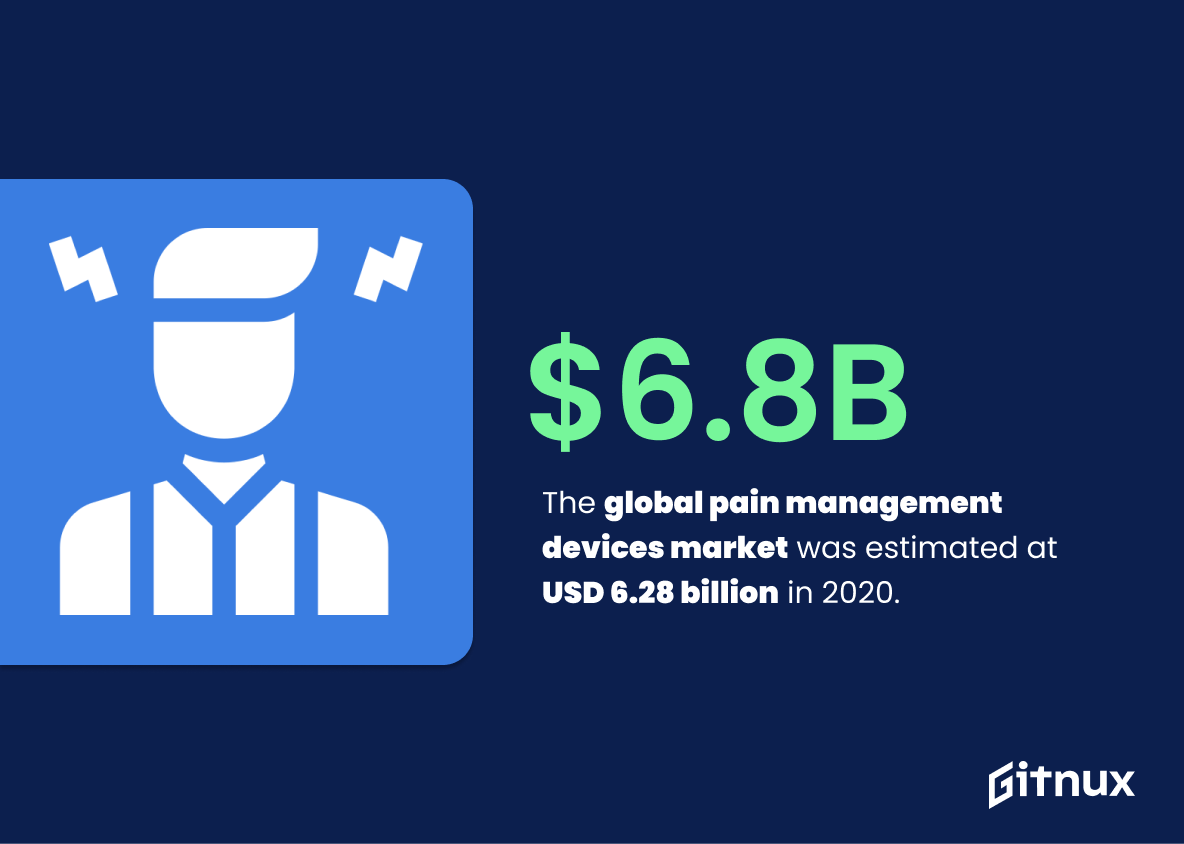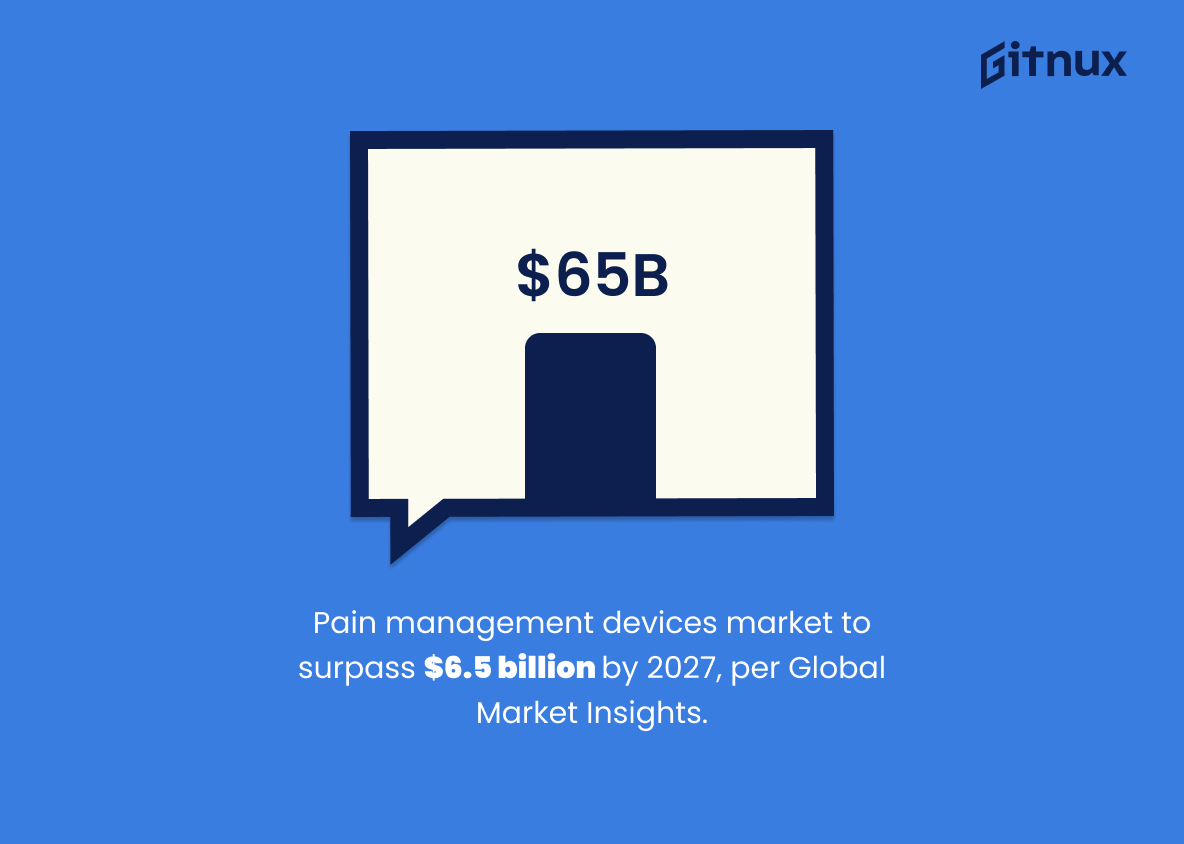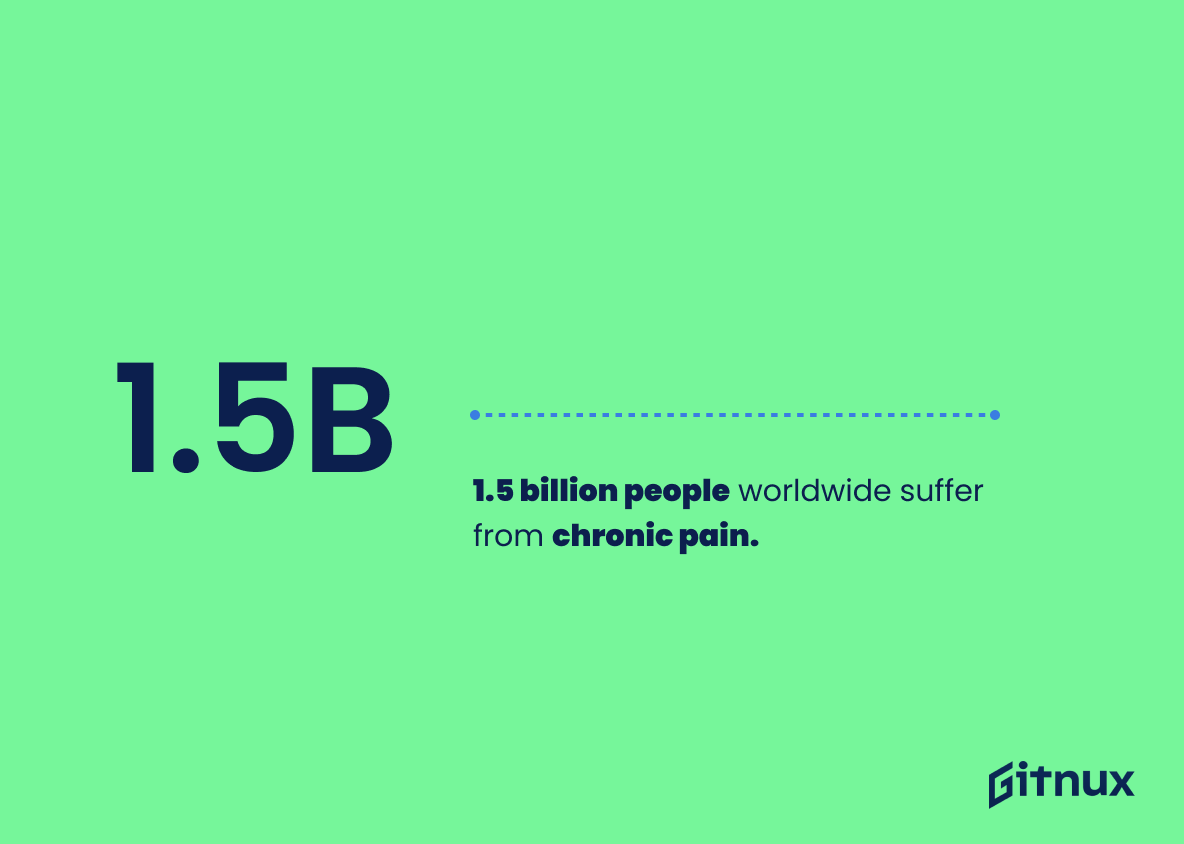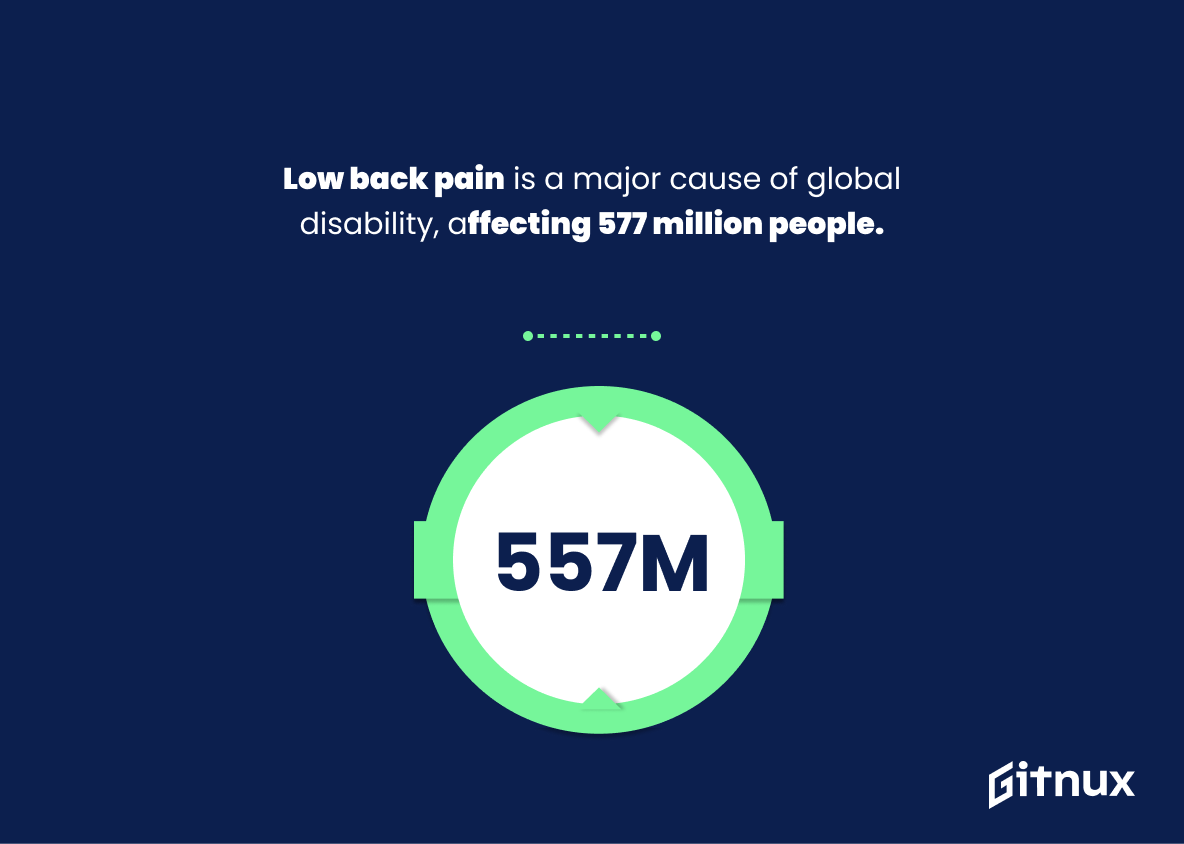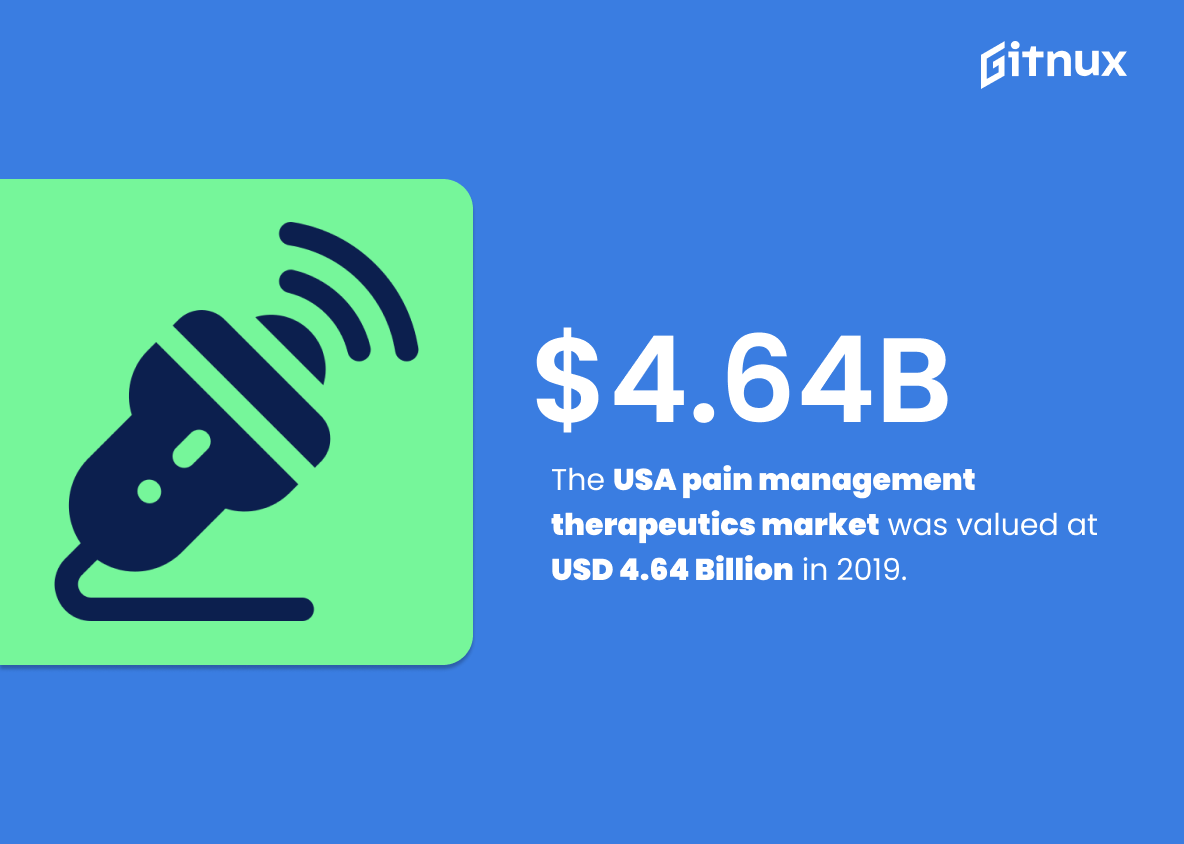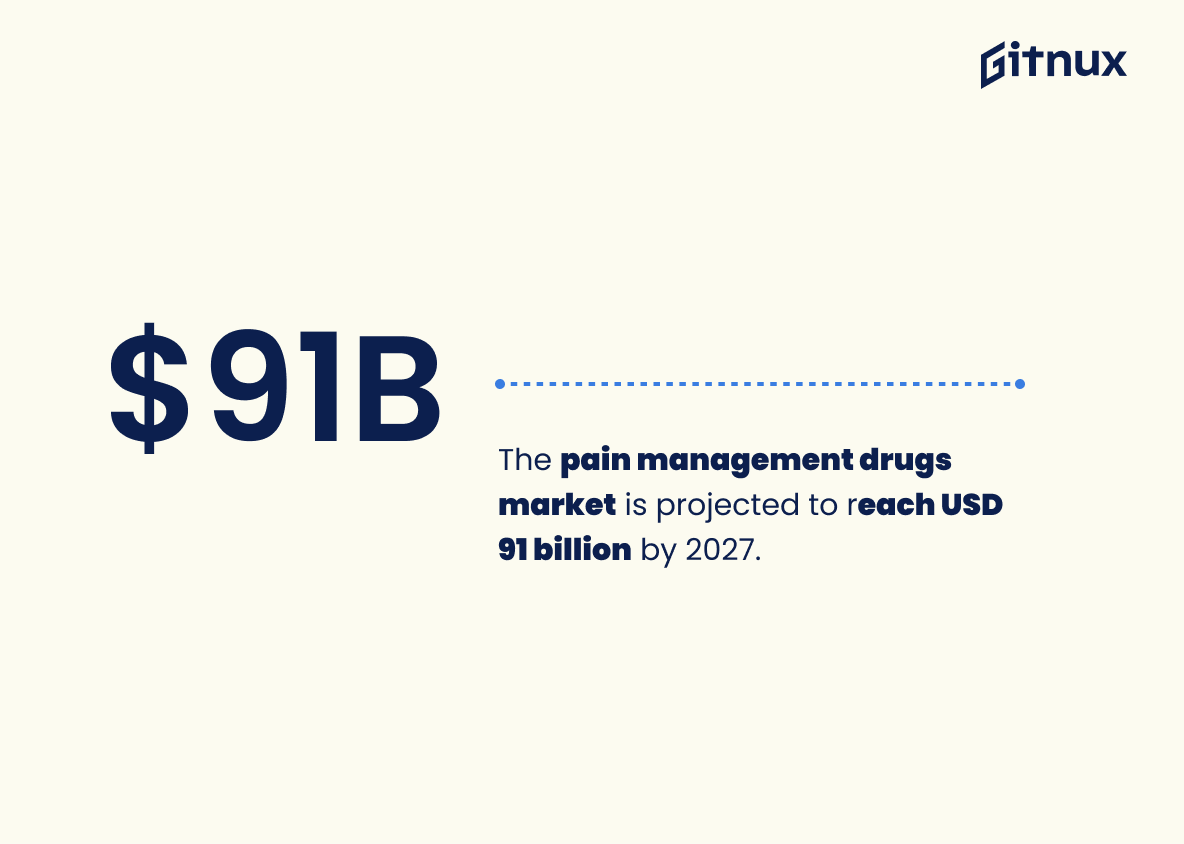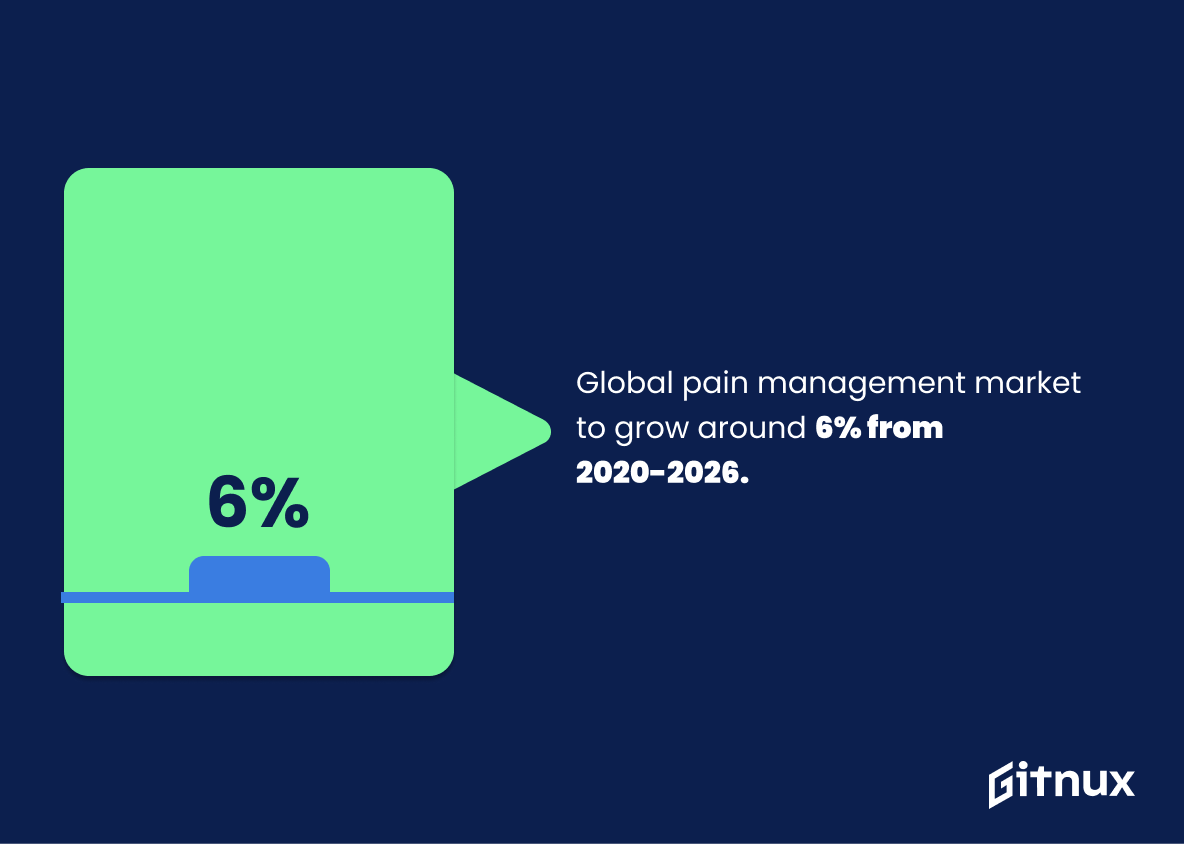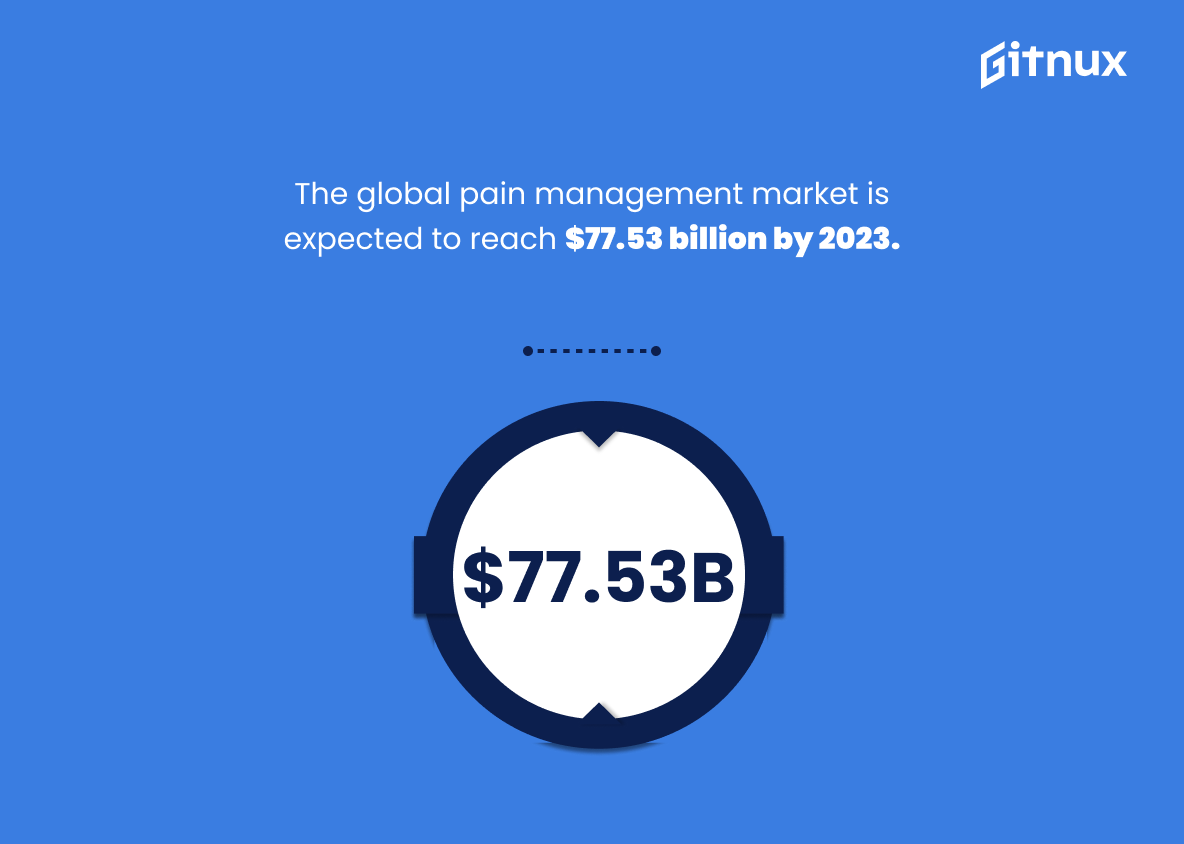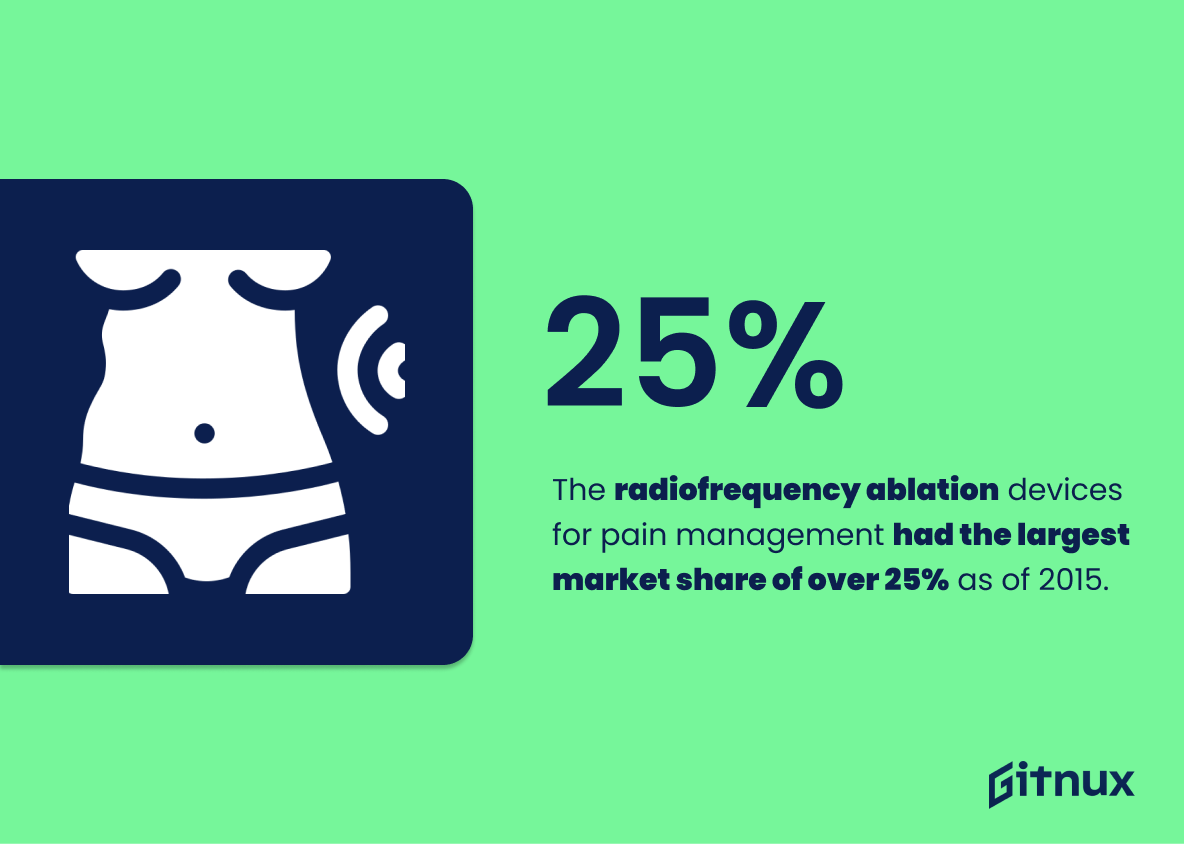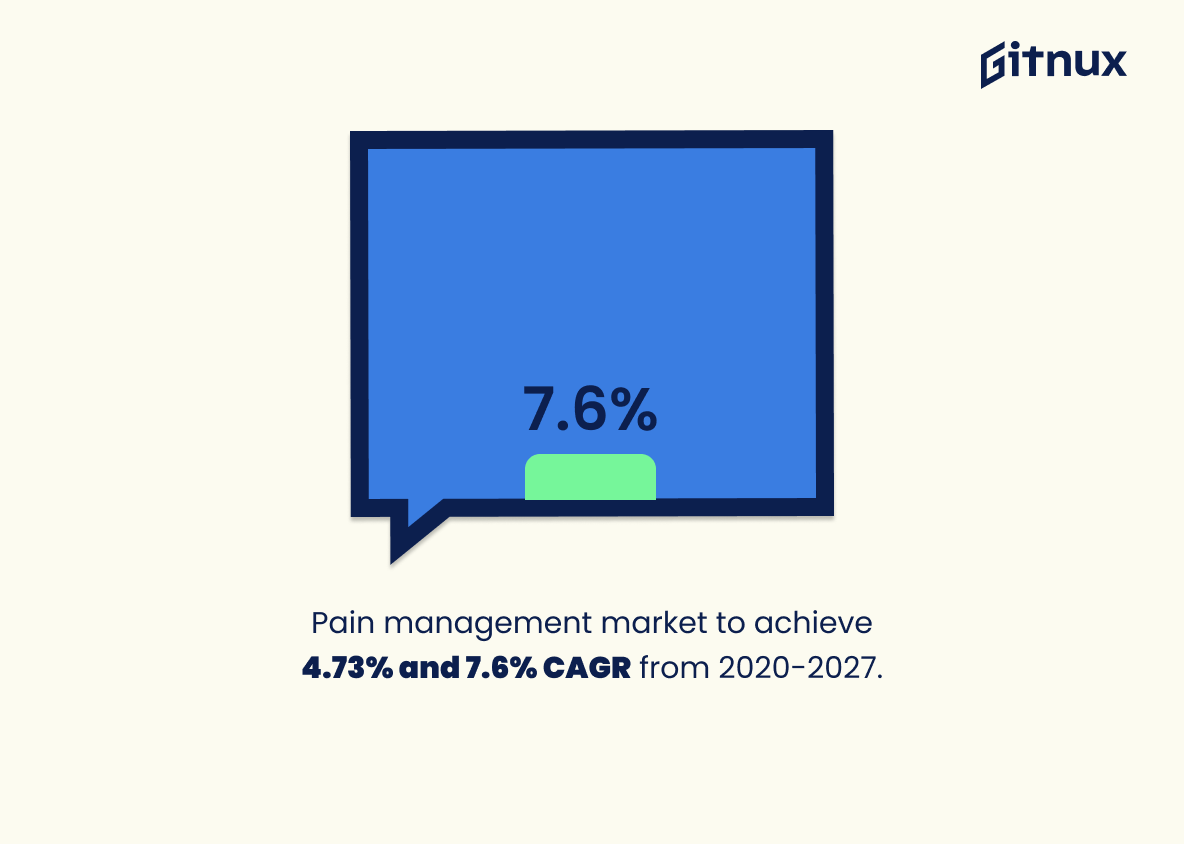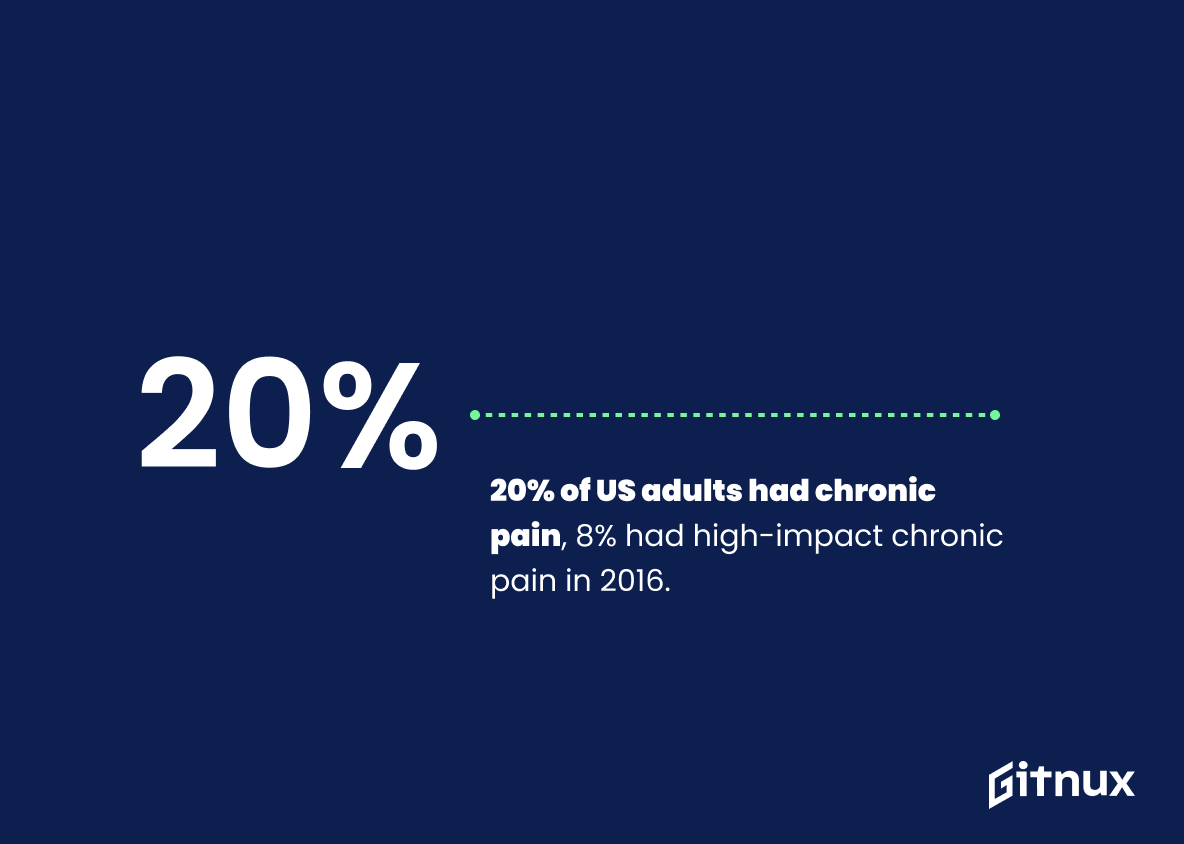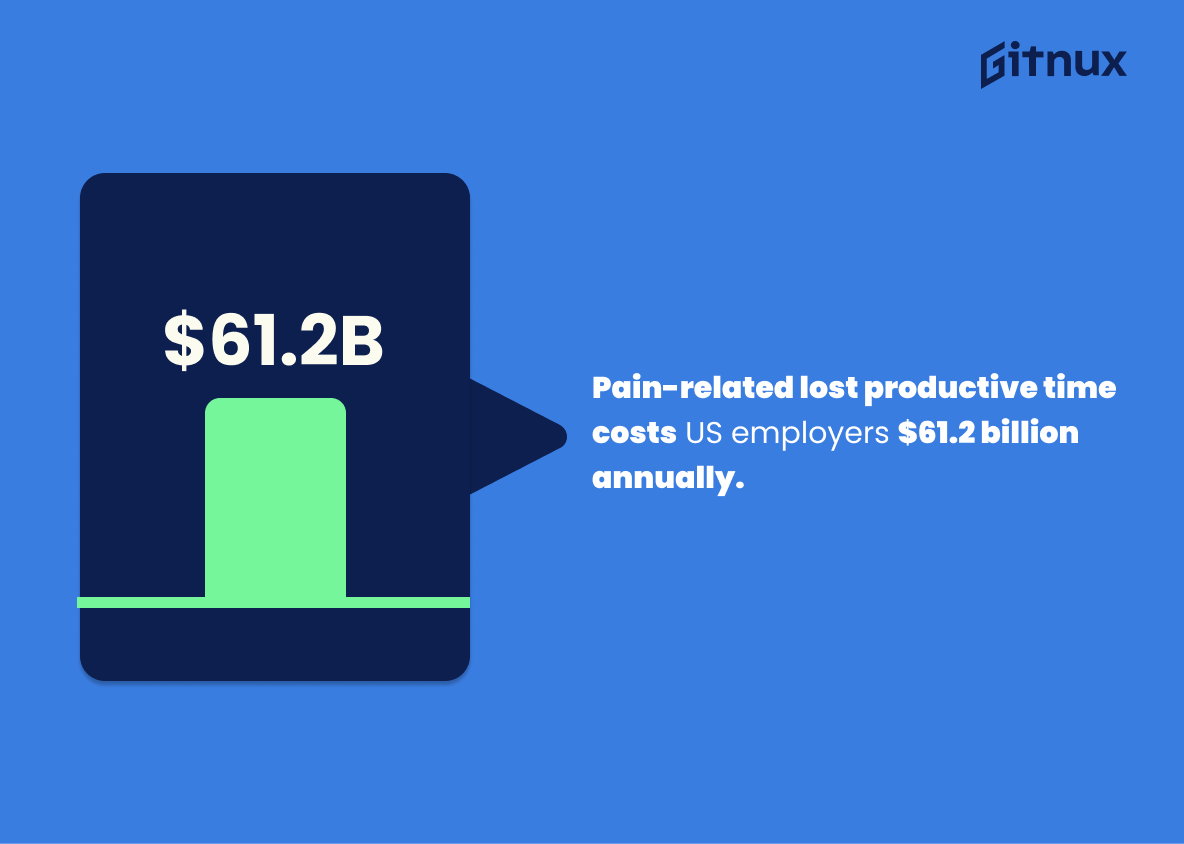In today’s fast-paced, high-stress world, effective pain management has become nothing short of an escalating global concern. As we delve into the explorative world of pain management industry statistics, we uncover a realm replete with fascinating insights and intriguing patterns. This industry, a vital pillar in modern healthcare, is growing exponentially as it stretches its reach across many diverse spheres – from pharmaceuticals to cutting-edge technologies to holistic therapies. This blog post unveils the compelling trajectory of this burgeoning sector, uncovering key statistics that pinpoint growth trends, catalysts, challenges, and opportunities defining the current and future landscape of pain management.
The Latest Pain Management Industry Statistics Unveiled
The global pain management devices market was estimated at USD 6.28 billion in 2020.
The robust USD 6.28 billion valuation of the global pain management devices market in 2020 is far from just another number. This figure serves as a telling compass, pointing towards the considerable economic weight carried by this critical sector in the healthcare industry. It paints a vivid picture of an industry that has already made substantial strides, but is poised for even greater advancements. That such a sizeable market valuation was achieved during a year brimming with unprecedented global health challenges speaks volumes about the sector’s resilience. As you navigate the nuances of the Pain Management Industry Statistics, this monumental economic estimate illuminates the industry’s importance, its prospective growth, and the potential opportunities lying therein.
According to Global Market Insights, the pain management devices market will likely surpass $6.5 billion by 2027.
Highlighting this projection from Global Market Insights serves as a potent testimony to the colossal growth potential of the pain management devices market over the next few years. The figure, teetering over a massive $6.5 billion by 2027, casts light on the accelerating demand for advanced, efficient, and patient-friendly solutions for pain management. Amid a blog post revolving around industry statistics, such numerical predictions not only emphasize the economic viability and robustness of the sector but also sketch out a vivid growth trajectory that future investments, innovations, and healthcare strategies can align with. In essence, it helps in outlining a clear roadmap for stakeholders – existing and potential – in the pain management sector.
1.5 billion people worldwide suffer from chronic pain.
With an astounding 1.5 billion individuals globally enduring chronic pain, this statistic illustrates both the profundity of the issue and the immense reach of the pain management industry. This numerical representation is more than just a figure—it’s a compelling stage set for the significant role that pain management plays in the global healthcare industry. It underscores the importance of constant advancements and investments in this field, essentially fueling the growth and development of the pain management industry. This comprehensive global pain footprint reaffirms the necessity for ongoing industry innovation, robust customer education, and, most importantly, the provision of effective pain relief solutions.
The incidence rate of pain increases by 19% in people aged 60 to 69 years.
Highlighting the robust upward trend of a 19% increase in pain incidence rate in individuals between the ages of 60 and 69 adds compelling substance to the conversation about Pain Management Industry Statistics. This growth enhances the industry’s relevance and underscores the fast-expanding demand for effective pain management solutions and tactics within this specific demographic. In essence, these figures paint a picture of a market that is ripe with opportunities for innovative pain management devices, therapies, and techniques underscoring the need for continued research, development and investment.
Low back pain is the leading cause of disability, affecting approximately 577 million people worldwide.
Tackling the immense prevalence of low back pain, which burdens approximately 577 million individuals globally, drives the essence of the pain management industry. This monumental figure acts as a powerful motivator for innovations in this field. It signals a vast opportunity for pharmaceutical breakthroughs, technological advancements and therapeutic interventions to chip away at this significant cause of disability. The growth and development in the industry are inevitably tied to navigating this and other such widespread pain-related conditions. This statistic underscores the urgent need and market potential – not only to alleviate widespread suffering but also to revolutionize a multi-billion dollar industry built around pain management. Therefore, the importance of this number cannot be understated – it anchors the trajectory and future prospects of the pain management industry.
The USA pain management therapeutics market was valued at USD 4.64 Billion in 2019.
Using the intriguing statistic, we uncover the colossal nature of the USA’s pain management therapeutics market, with an impressive valuation of USD 4.64 Billion in 2019. This figure, striking in its own right, is a testament to the scale and importance of the industry and serves as a weighty anchor in any discourse about Pain Management Industry Statistics. The magnitude of US market’s worth underpins the critical role it plays, not just domestically, but on the global healthcare landscape. Furthermore, it implies the potential for innovation and growth within the sector, and the size of opportunities available for entrepreneurs and investors alike.
The global demand for pain management drugs was worth over USD 71 Billion in 2019.
Peering into the depths of the Pain Management Industry, it becomes increasingly clear that the hefty monetary value of USD 71 Billion, associated with the global demand for pain management drugs in 2019, is not merely a number. It’s a robust testament to the gargantuan role these medications play in the global healthcare sector. This monolithic figure signifies the escalating necessity for these pharmacological allies in the battle against discomfort and suffering. Moreover, it offers insight into potential market growth, investment opportunities, and the escalating strain and demand placed upon pharmaceutical manufacturers. Thus, the fabrication of such an expansive market underpins the importance of continuous innovation, research, and development in this particular field of medicine.
The pain management drugs market is projected to reach USD 91 billion by 2027.
Sailing into the future, the Pain Management Industry is set to carve a pathway towards financial prosperity, with projections highlighting a titanic worth of USD 91 billion by 2027. Imagine, a veritable ocean of possibilities stretching towards the horizon. This dazzling figure is a beacon of the industry’s growth potential, signifying the increasing demand for pain management drugs. It mirrors the wide-ranging research efforts and brings into focus the health care sector’s ongoing endeavors to alleviate human suffering. The statistic, hence, acts as a lighthouse guiding companies, investors, and stakeholders to strategize their moves, navigate the market trends, and capitalize on potential investment opportunities, paving the way for ground-breaking advancements in the pain management domain.
The worldwide market for pain management is expected to grow approximately 6% between 2020 to 2026.
Highlighting the projected growth of the global pain management market at an astounding rate of 6% from 2020 to 2026, serves a powerful beacon indicating the enormous potential this industry holds. In the vast ocean of Pain Management Industry Statistics, this piece of information becomes a navigational aid, threading together the past, present, and future of the market. By shedding light on this future trajectory, readers are offered an eye-opening snapshot of monetary value, market share, and the scope for technological advancements. This paints a vivid picture of impressive growth trends that prime this industry for investment, suggesting it to be a promising front-runner in healthcare sectors.
The global pain management market is expected to reach $77.53 billion by 2023.
In the realm of the Pain Management Industry, the anticipation of the global market touching the $77.53 billion mark by 2023 carries significant weight. This monumental figure portends the potential growth and expansion within the industry, illustrating the rising demand and need for pain management solutions. It is a clear testament to the vast number of individuals grappling with chronic and acute pain worldwide, underscoring the market opportunities and challenges lying ahead for the businesses involved. This formidable projection also uncovers the relentless efforts towards innovation, signifying the continual evolution and sophistication of pain management solutions. All these facets combined elevate the importance of this single statistic.
The radiofrequency ablation devices for pain management had the largest market share of over 25% as of 2015.
Understanding the statistic about radiofrequency ablation devices dominating over a quarter of the market share in 2015 provides a pivotal insight into the pain management industry. It underlines the significant role these devices play within the sector. Seizing such a considerable segment indicates a high level of acceptance and trust among medical experts and patients in managing pain. Consequently, it subtly influences investment decisions, by guiding stakeholders towards lucrative ventures within pain management industry. It also sparks curiosity about the ongoing evolution and future trends in this market segment.
The pain management drugs & devices market is expected to attain a CAGR of 4.73% and 7.6% respectively from 2020 to 2027.
Projected growth rates are powerful indicators of market performance and strength. This statistic, highlighting an anticipated CAGR of 4.73% for pain management drugs and 7.6% for devices from 2020 to 2027, serves as an insightful compass for industry trends. It signals increasing demand and suggests that the pain management industry is heading into a phase of substantial expansion. For business stakeholders, investors and market analysts, such data provides a roadmap to potential growth areas and can drive strategic planning and investment decisions. For patients and healthcare providers, it illustrates an escalating focus and investment towards addressing pain management, hinting towards innovation and improved solutions in the upcoming years.
More than 20% of U.S adults suffered from chronic pain and 8% had high-impact chronic pain in 2016.
Dive into the depth of these figures, a striking revelation emerges regarding the prevalence of chronic pain among U.S adults. Over a fifth of the population, equivalent to more than 20%, battled ongoing discomfort in 2016, with almost 10% of that number struggling with high-impact, severe pain. This underscores the critical need and growing demand for effective pain management strategies, therapies, and products. Such extensive incidence of chronic pain significantly drives the growth of the Pain Management Industry and it also shows the vast market potential for developments in new treatment modalities and improvements in existing ones. The figures serve to illuminate the magnitude of potential impact that successful pain management strategies can have on improving the quality of life of millions of individuals. Think about it, a seemingly small improvement reflected in statistics could represent relief for millions of people.
Pain-related lost productive time costs US employers $61.2 billion annually.
In a world buzzing with industry statistics, one figure that stands out like a lighthouse in a storm is the colossal $61.2 billion annual cost endured by U.S employers due to pain-related lost productive time. Nestled within the annals of a blog post about Pain Management Industry Statistics, this figure injects a stark reality check, providing a tangible manifestation of the raw economic impact of inadequate pain management. It essentially emphasizes that the cost of pain extends far beyond the individual sufferer, echoing in the corridors of businesses nationwide. Undeniably, these astronomical figures spur on the urgency for more effective pain management solutions, asserting the vital role of the pain management industry not just in healthcare, but in the economic sustainability of businesses. It is a potent reminder that pain management isn’t just about alleviating individual suffering, but it’s a pivotal component in the machinery of productive employment, the smooth running of which is crucial for the economic prosperity of the nation.
The North America pain management drugs market was valued at $18.08 Billion in 2019.
Underscoring the profound financial implications of the pain management industry, the valuation of North America’s pain management drugs market stood at a staggering $18.08 billion in 2019. This considerable figure serves not just as a testament to the industry’s immense monetary influence, but also to the scale of demand for pain management solutions in the region. It accentuates the market’s potential for growth and the opportunities it beholds for stakeholders, whether they be healthcare providers, pharmaceutical companies or investors, delivering a resounding confirmation of the industry’s significance.
The Neuropathic Pain market was valued at $5.42 billion in 2020.
The riveting figure of $5.42 billion underscores the colossal valuation of the Neuropathic Pain market in 2020. This formidable metric provides a crystal-clear illustration of the sheer magnitude and potential in the Pain Management Industry. The stat vividly encapsulates the robust demand for neuropathic pain solutions and opens up a world of market opportunities worth exploring further. Unequivocally, it is a beacon that guides stakeholders, suggesting a rich vein of untapped potential, ready to be explored and exploited by creative and viable treatment options in the industry’s dynamic landscape.
The neuropathic pain segment accounted for the largest pain management market share of 28.6% in 2020.
The aforementioned statistic serves as a powerful revelation that underscores the prevalence of neuropathic pain, as it singularly commands a massive 28.6% majority of the pain management market in 2020. This percentage quantifies neuropathic pain’s grip as the leading concern within the industry, shining a spotlight on increased demand for specific treatments and interventions in this segment. Whether you’re a healthcare provider, policymaker, or patient, understanding the weight of this figure allows you to comprehend how industry efforts are channeled and resources are allocated. In effect, if the pain management industry were a spinning wheel, neuropathic pain would be the axle on which it turns.
The Asia-Pacific region is expected to witness the fastest growth in pain management through 2026.
Delving into the alluring horizons of data, the revelation that the Asia-Pacific region is poised for the most accelerated growth in pain management through 2026 has key implications, especially in crafting a nuanced view of the global Pain Management Industry. Firstly, as the evidential pulse of the industry’s future growth patterns, it indicates that market players should consider the Asia-Pacific as compelling ground for expansion or entry. Second, its implications stretch to innovation trends, potentially suggesting that this region may evolve as a leading butterfly of breakthrough developments in pain management. Lastly, it may powerfully contributed to policy discussions related to healthcare growth, infrastructure needs, and training of healthcare professionals in this region. Therefore, this statistic is a high-impact element illuminating the direction of the global Pain Management Industry.
Prescription pain drug abuse affects more than 12.5 million Americans.
Delving into the number, it’s captivating to note that prescription pain drug misuse engulfs an astronomical figure of over 12.5 million Americans. The implications of this figure are overwhelming, especially in the sphere of pain management industry. Firstly, it underscores the dire call for stringent monitoring and regulation within the sector to mitigate cases of misuse. Secondly, with such a whopping statistic, the demand for effective pain management solutions is evidently soaring—a cue for industry players to step up development and provision of safer, addiction-free alternatives. Finally, this figure hints at the potentially vast market for rehabilitation centers and programs, offering industry stakeholders an alternate avenue for diversification and growth. So, in essence, the pulsating heartbeat of this number echoes far and wide, shaping the future of the pain management industry.
Almost two-thirds of total deaths involving prescription opioids were among men (more than 68,400, or 64%).
Delving into the intriguing world of Pain Management Industry Statistics, it’s worth noting a poignant fact that hovers like a specter over this industry. A staggering 64% of total deaths involving prescription opioids were among men, which accounted for more than 68,400 individuals. A glance at these numbers delivers a stark message, sounding out a clear warning about the variable impact of opioids across different gender demographics.
This revelation brings to the forefront the call for a nuanced understanding of various factors that contribute to opioid misuse. Such gravitating insights reinforce the need for industry stakeholders to channel their efforts into gender-sensitive education, preventive programs, and strategies that combat opioid misuse. Incorporating this data can help in refining the approaches in the industry, ultimately contributing to safer and more effective pain management practices.
Conclusion
In essence, the Pain Management Industry is undeniably a dynamic sphere, constantly evolving with advanced treatment modalities, technological improvements and healthcare policies. Its growth is profoundly underlined by the increasing global prevalence of chronic pain and the surging demands for effective management techniques. Industry statistics offer valuable insights, illuminating the progressions, pitfalls, and potential future directions of this significant medical field. As we continue to develop a deeper understanding of pain management, the industry is expected to remain at the forefront of healthcare, offering promising opportunities for businesses, healthcare providers, and most importantly, patients seeking relief and quality of life.
References
0. – https://www.americanaddictioncenters.org
1. – https://www.www.globenewswire.com
2. – https://www.www.marketresearchfuture.com
3. – https://www.www.researchandmarkets.com
4. – https://www.www.businesswire.com
5. – https://www.www.cdc.gov
6. – https://www.www.alliedmarketresearch.com
7. – https://www.www.fortunebusinessinsights.com
8. – https://www.www.gminsights.com
9. – https://www.www.grandviewresearch.com
10. – https://www.www.ncbi.nlm.nih.gov
11. – https://www.medalerthelp.org
12. – https://www.www.meticulousresearch.com
